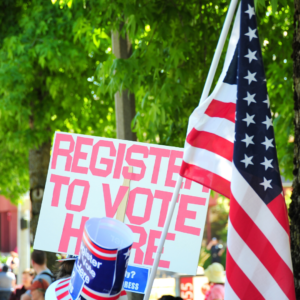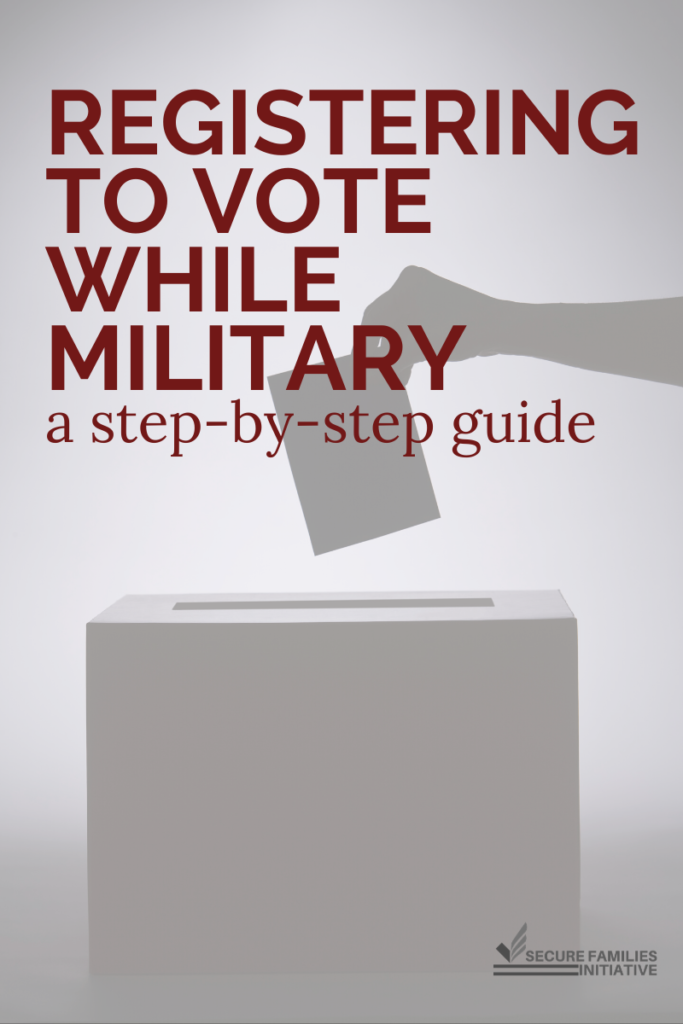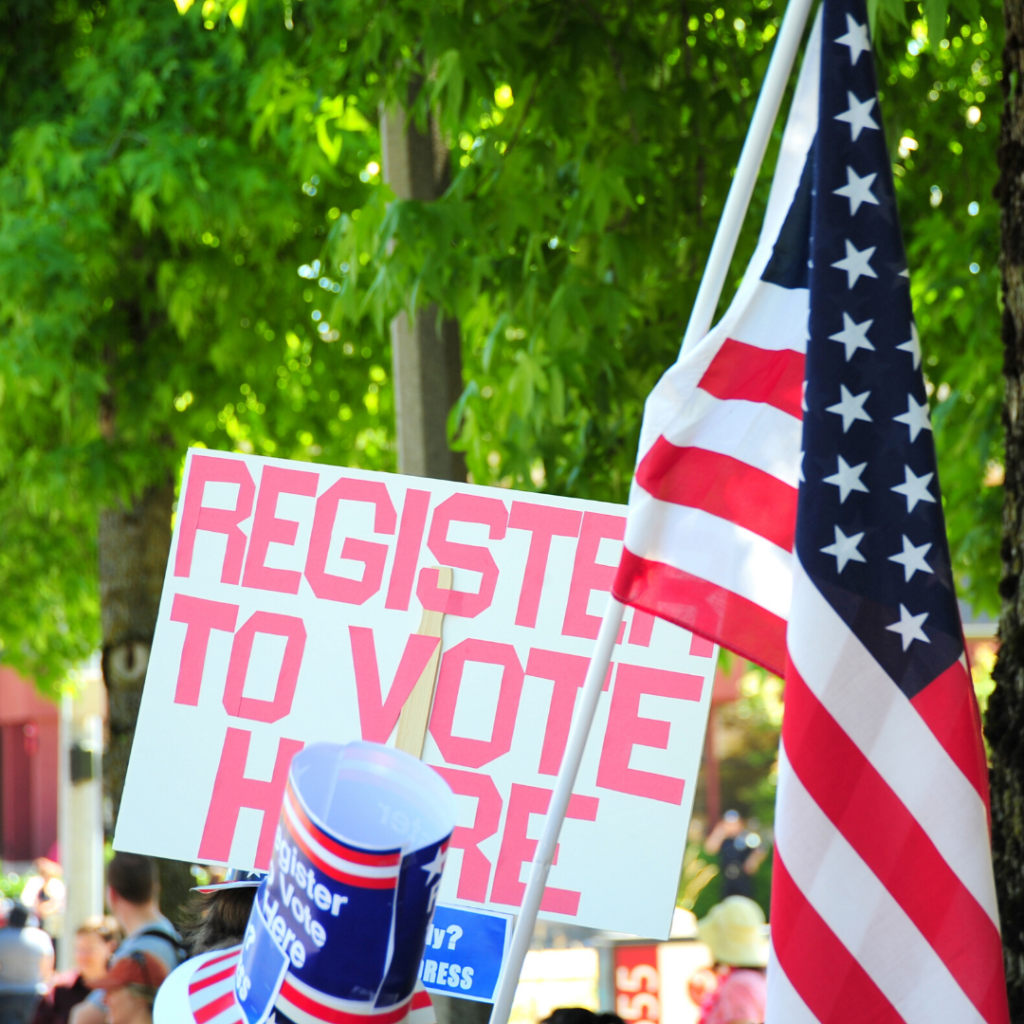The 2022 election is just around the corner so we’re providing a quick overview of the unique considerations for military families when registering to vote. Between frequent PCSs, a home of record and even living overseas, we know it can be confusing. We’re here to help!

Military-Connected Voter Registration Flowchart
This Voter Registration Flowchart provides a step-by-step, question-by-question process to help you determine the most confusing question for many military-connection folks: where to register to vote. We talk through the process in more detail below, but this flowchart is a great place to start!

Step 1: Decide where you want to vote
Here are your options:
If your spouse serves in the National Guard, Reserves, or is retired altogether from the military, then you vote in the district where you live. Easy peasy.
If your spouse is active duty, and you are currently stationed overseas, then you are considered a “UOCAVA voter” and should register to vote through your “state of legal residence.” If you’re not sure where that is, we’ll talk more about that in a second.
If your spouse is active duty, and you are currently stationed within the U.S., you have a choice between voting where you live and voting “back home.” (I know – since when does the military let you choose anything, amiright?)
Now, it is usually recommended that you vote through your state of legal residence, and here’s why:
For us active duty folk, “residence” refers to the place where we call home, even when the military makes us move temporarily somewhere else. Usually, your residence is the state that shows up on your spouse’s Leave and Earnings Statement (LES) and determines where you pay state taxes.
A lot of us maintain our residency “back home” even as we move around. Maybe that’s where we want to settle down once we leave the military. Maybe there are economic advantages to being a resident in that state. Whatever the reason, voting is one of many ways military families can maintain a connection back home and simplify their residency status.
However, if you’d rather vote in the district where you live, you can do that instead! That’s what I do myself, and I know a handful of other spouses who do too. In one spouse’s words: “I always vote in the district where my kids are going to school, so I can keep the board accountable.” Personally, I just think it’s more fun to get involved with my local elections.
Just be aware: if you try to vote locally, some states may require you to become a resident there first. If you don’t intend to change your residency, make sure you pay attention to the rules before you register.
Our advice? Always consult knowledgeable counsel about your situation when considering voting locally.
Step 2: Here’s how to register
If you decide to vote locally, you can use normal civilian registration channels — nothing special as a military voter. With help from our partners at Register2Vote, we have that registration form ready for you to fill out on our website.
If you decide to vote through your state of residence, you should use the Federal Post Card Application (FPCA). As long as you live away from that home, no matter whether that’s CONUS or overseas, you are considered an “absent” military family member and are eligible to use this form. It lets you register to vote and request an absentee ballot all in one! Nifty, right?
Step 3: Vote!
Now all that’s left is to cast your ballot! For local voting, you can use our online tool to find your polling place and avoid any Election Day lost-ness.
For absentee voting, make sure you get that ballot in the mail ASAP! Each state sets their own deadlines, so follow the instructions on your ballot.
If for some reason your absentee ballot doesn’t reach you in time, use FVAP’s Federal Write-In Absentee Ballot (FWAB) as a back-up.
Still confused?
As with anything voting or advocacy-related, don’t hesitate to reach out to us if you’re confused. Our team of fellow military spouses is always just a click away!


